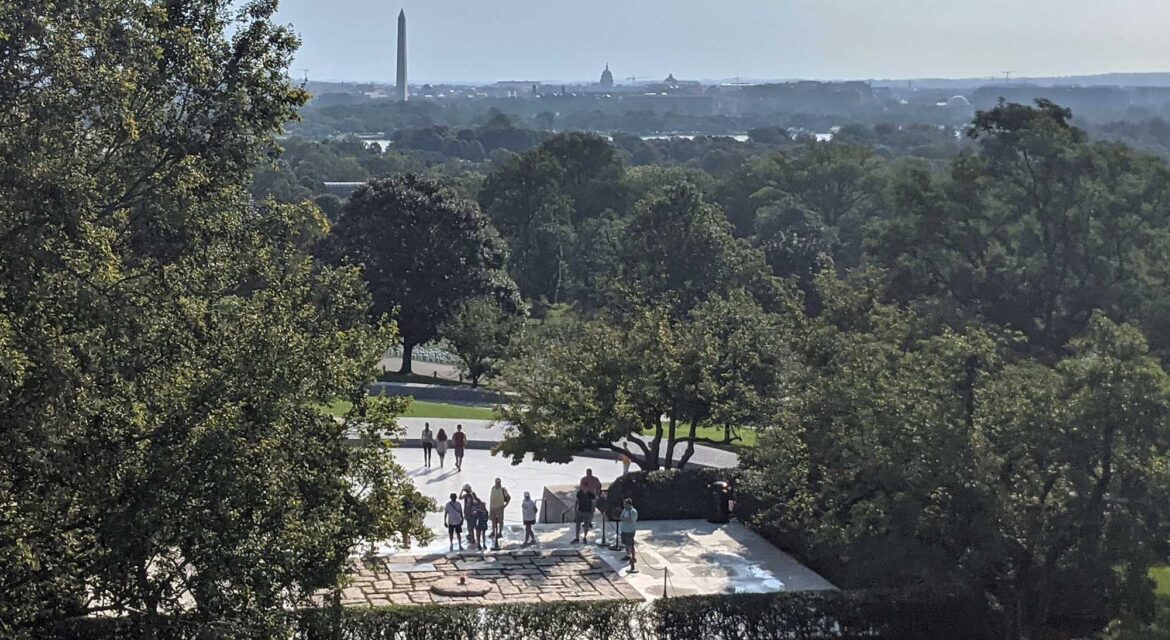 The simple but powerful layout and features of the President John F. Kennedy Gravesite have helped to transform Arlington National Cemetery into one of the Washington area’s most popular tourist attractions. Located within Arlington National Cemetery in Arlington, Virginia, the monument showcases how a memorial can enable audiences to meaningfully connect with the people and legacies that define a nation.
The simple but powerful layout and features of the President John F. Kennedy Gravesite have helped to transform Arlington National Cemetery into one of the Washington area’s most popular tourist attractions. Located within Arlington National Cemetery in Arlington, Virginia, the monument showcases how a memorial can enable audiences to meaningfully connect with the people and legacies that define a nation.
Allowing the American People to Access and Engage with a Legacy
 United States President John Fitzgerald Kennedy was assassinated in 1963, with his body being brought back to Washington D.C. soon after. It was quickly decided that his gravesite would be on the hillside just below Arlington House in Arlington National Cemetery. President Kennedy and two Kennedy infants were interred at the cemetery in 1963, but work on a more permanent memorial began soon after.
United States President John Fitzgerald Kennedy was assassinated in 1963, with his body being brought back to Washington D.C. soon after. It was quickly decided that his gravesite would be on the hillside just below Arlington House in Arlington National Cemetery. President Kennedy and two Kennedy infants were interred at the cemetery in 1963, but work on a more permanent memorial began soon after.
Completed in 1967, the John F. Kennedy Gravesite has numerous features and levels. After ascending via different sets of stairs, visitors can approach the grave from a granite elliptical plaza that overlooks Washington, D.C. This short plaza has a granite wall that has been inscribed with numerous quotations attributed to President Kennedy. Another short flight of steps leads to the grave area, which is paved with irregular stones of Cape Cod granite, all of which were quarried near the site of the President’s home.
The Eternal Flame burns from the center of a five-foot circular granite stone at the head of President Kennedy’s grave. Lit during his funeral, it was designed so that it would automatically relight if the flame gets extinguished by rain, wind, or accident.
Now landscaped with various native plants and historic trees, the area had never been considered suitable for graves or a general burial, making it an ideal location to be utilized as a larger memorial. Over the years it has been further updated, as an expansion to the John F. Kennedy Gravesite was dedicated in 1971 to accommodate Robert Kennedy’s grave. Jacqueline Kennedy Onassis and Senator Edward M. Kennedy would eventually be buried at the site as well, compelling further updates that are connected to a continual evolution of the site.
Designed to be accessible to the American public, the John F. Kennedy Gravesite allows audiences to engage with the legacy of the President and the United States as a whole on a profound level. Doing so has attracted the attention of audiences from across the world to help transform what was a military cemetery into one of the most important landmarks in the United States.

Interest and Activity from Audiences Across the World
 Visited by more than 16 million people in its first three years, the installation of the John. F. Kennedy Gravesite led to an unprecedented increase in demand for burials at Arlington National Cemetery. This interest as well as the continual activity at the Gravesite itself has helped transform the entire location into a national landmark.
Visited by more than 16 million people in its first three years, the installation of the John. F. Kennedy Gravesite led to an unprecedented increase in demand for burials at Arlington National Cemetery. This interest as well as the continual activity at the Gravesite itself has helped transform the entire location into a national landmark.
By showcasing the legacy of President Kennedy in a subtle yet powerful manner, audiences have been able to connect with it in a way that has helped turn the entire site into an attraction that draws the attention of audiences from across the world. Ever evolving to enable connects with the people and legacies that it honors, the John. F. Kennedy Gravesite highlights the many different ways that the transformation of a space with a monument or memorial can compel attention and activity across the eras.


